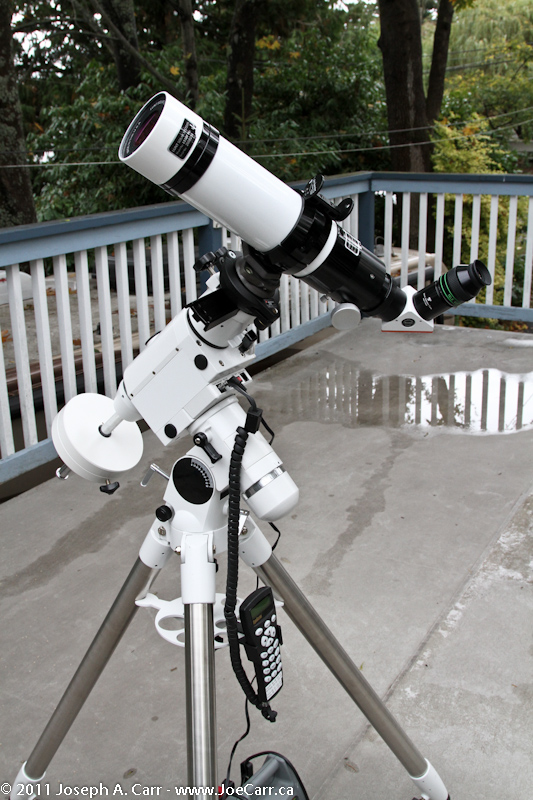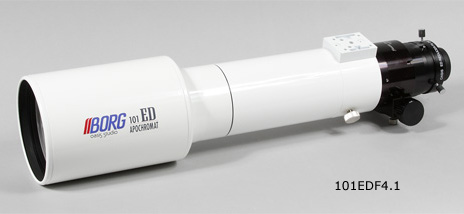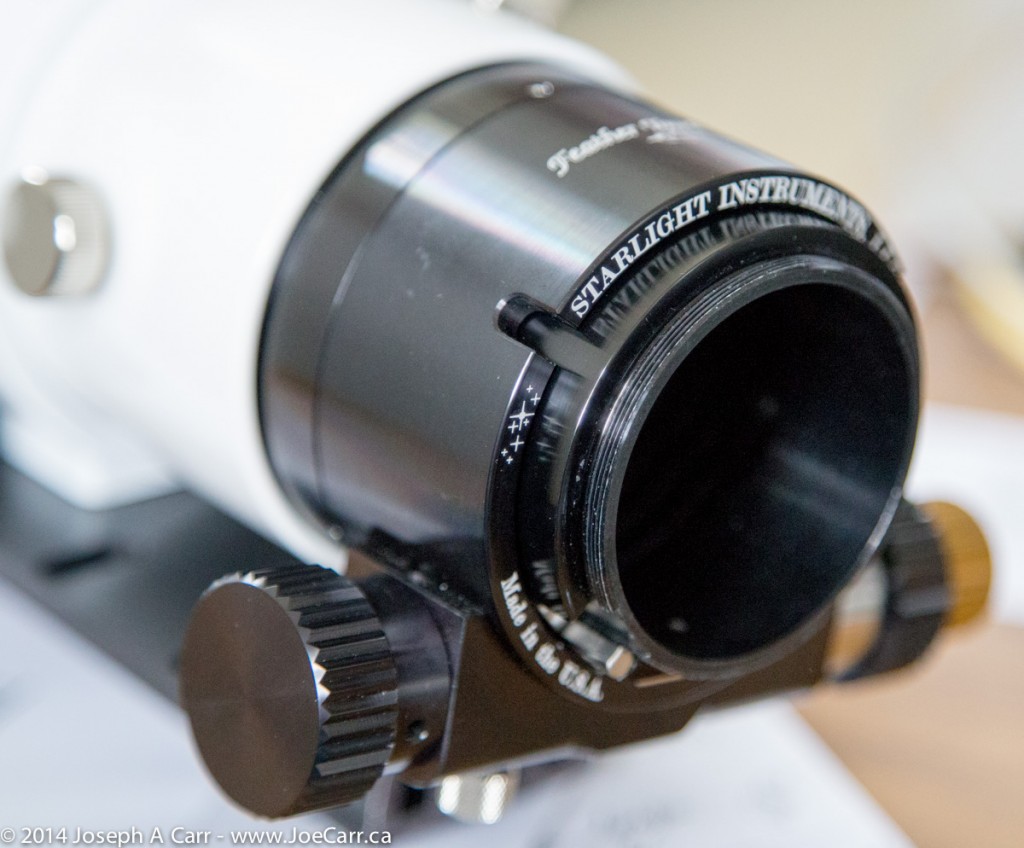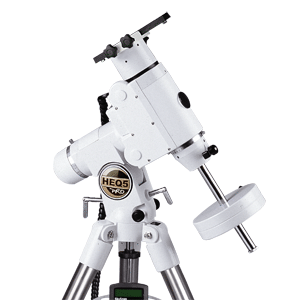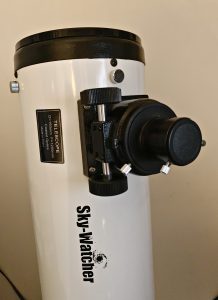I preordered a Lunt Solar Systems LS60THa/LS50FHa solar telescope when Lunt was just getting started, and I have been well pleased with this specialized telescope over the ensuing years. This Hydrogen-alpha telescope is fitted with a double-stacked set of etalon Ha filters, hence the LS60/LS50 designation. This combination results in under 0.5 Angstrom bandpass, which provides 3D like enhanced surface detail and beautiful prominences as well. My configuration also has the B1200 energy rejection diagonal, which results in a wider aperture at the eyepiece end of the scope, and ensures maximum detail can be observed and photographed when observing the Sun. As I get older, I appreciate being able to observe during the day!
I mount this scope on a Sky-Watcher HEQ5 Pro mount with the help of some Manfrotto conversion mounting plates and a Vixen-sized rail. This mount is a bit of overkill for the Lunt, however the resulting tracking is rock solid, which is essential for photography. The precision Crayford-style focuser with 10:1 reducer will support dSLR cameras with no problem, and makes focusing much easier. I use a Tele Vue Sol Searcher finder, which eliminates the tricky part of observing – finding the Sun in the first place!
I mount a Canon T2i dSLR a-focally on the Lunt Ha scope using a Tele Vue 2.5x Powermate in the optical train. This gives an ideal image scale, with the Sun almost filling the field of view on the camera sensor.
I use a Borg 101EDF4.1 Astrograph apochromatic refractor from Hutech as my general purpose scope for observing and photographing the night sky. The superb quality Japanese optics and build are a well-known feature of the Borg astrographs (they make several models). They utilize a 4-element design with an ED super reducer optimized for full 35mm sized digital imaging. The reducer unit on the back of the scope also has a superb Feather Touch focuser, a camera rotator to allow precise framing of objects, and a 2″ filter drawer. The Borg 101ED Astrograph weighs a mere 6kg (13lbs), so this is a relatively light weight combination which delivers superb astronomical imaging capability.
The Borg 101EDF4.1 Astrograph delivers about a 4° field of view, which is very good for wide-field photography using the Canon T2i mounted at prime focus. This lends itself very well to photographing fairly large celestial objects. For smaller objects, it is important to increase the image scale on the sensor in order to achieve acceptable results.
The Sky-Watcher HEQ5 Pro mount is my workhorse, since I mount all my telescopes on it. This mount is very good value, comes equipped with a Celestron-compatible goto system, and delivers very good tracking without requiring guiding, although it has a guiding port as well. Some astronomers look down on “go-to” mounts, but they fit my needs very well. The HEQ5 combined with the Borg is portable enough to be transported in the car, and can be carried to an observing spot of my choice without strain. Setup is quick and easy, allowing me to be observing within 15 minutes of arrival. I don’t have to hunt for celestial features using star charts, since the mount electronics reliably point on-target.
I also have a 6″ Sky-Watcher Dobsonian telescope (1,200mm focal length, 150mm mirror diameter, f/8), which I use as a grab-and-go telescope for quick observing from my front deck or driveway. The Dobsonian mount means there is literally no setup – just plop it down on the ground and start observing. I do have mounting rings for this telescope in order to mount it on my HEQ5 tracking mount, should I wish to use the “goto” and tracking capabilities of the mount.
I am a member of the Royal Astronomical Society of Canada, Victoria Centre. As a group, we operate a well-equipped Observatory which includes a TPO 16″ Ritchey–Chrétien telescope mounted on a Paramount ME mount. I used to own a Meade LX200R 8″, but sold it when Victoria Centre built their observatory. I now have access to this superior setup virtually anytime I want it. I can take advantage of the superb tracking of the Paramount ME, which gives me prime focus photography through an f/8 3,250mm focal length scope with near-flawless tracking and guiding. This setup is perfect for photographing small objects such as planets, planetary nebulae, and smaller galaxies. Have a look on my astrophoto gallery for some examples of this type of work.
